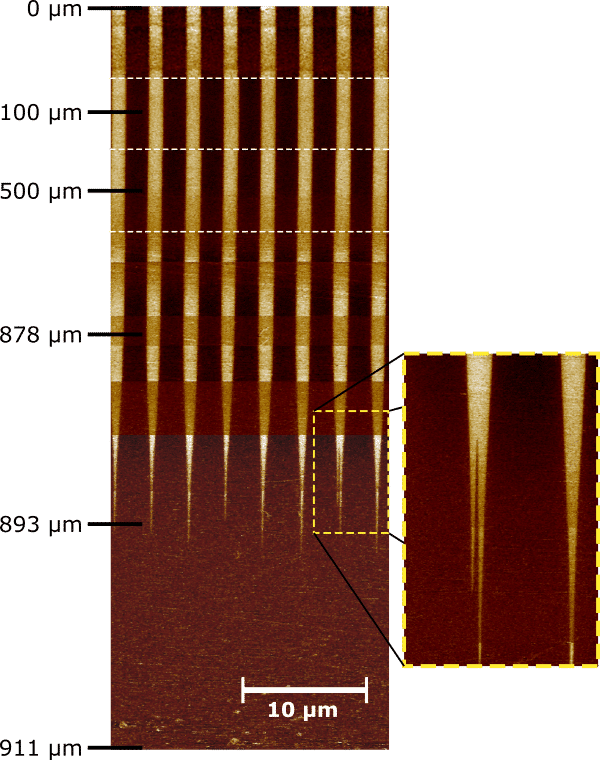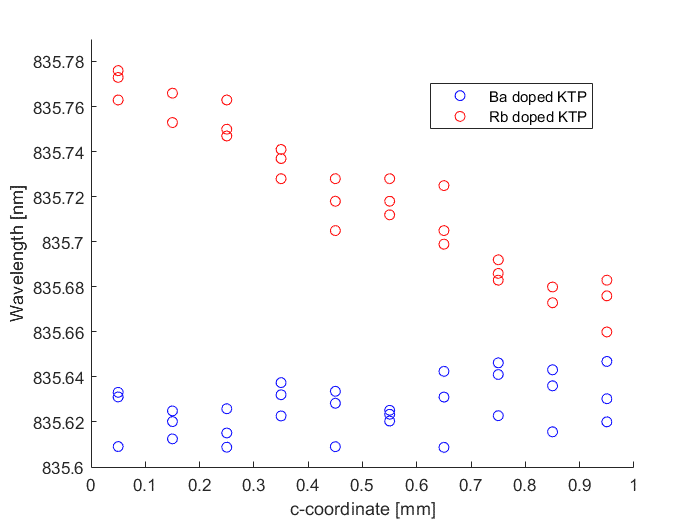
Novel method of coercive field engineering through barium-ion indiffusion in KTiOPO4
We present a new method for coercive field engineering in KTiOPO4 (KTP) using barium-ion indiffusion, for quasi-phase matching applications. With this method we have engineered high quality domain gratings down to 2.92 μm periods in 8x3x1 mm pieces of flux grown KTP.

Fig.1: Stitched PFM images of domains on the b-face of a poled KTP crystal.
Ba-exchange involves photolithographic patterning of the c- polar surface (at 0 μm in fig.1) and submersion into a Ba-nitrate melt. The periodic Ba-exchange locally increases the coercive field on the c- face, causing domains to form in non-exchanged regions. Close to c+, the Ba-exchange causes domains to terminate around 20 μm from the c+ surface.

Fig.2: Phase matching wavelength shift in Rb- and Ba-exchanged KTP crystals.
This method shows a reduced shift of the phase-matched wavelength in comparison with the previously established Rb-exchange coercive field engineering method (fig.2)[1]. The addition of barium in Rb-exchange has formerly been used to increase Rb-ion indiffusion depth, but not thought to be useful by itself [2]. However, these results demonstrate that Ba-exchange may be preferable for certain applications.
References:
1. C. Liljestrand, F. Laurell, and C. Canalias, "Periodic poling of Rb-doped KTiOPO4 by coercive field engineering", Opt. Express 24(13), 14682-9 (2016)
2. K. Daneshvar, E. A. Giess, D. Kang, J. R. Williams, and D. Dawes, " Rb ion-exchange profile in potassium titanyl phosphate (KTP)". Opt. Mat. 12(4), 453-457 (1999).
Powered by Eventact EMS
